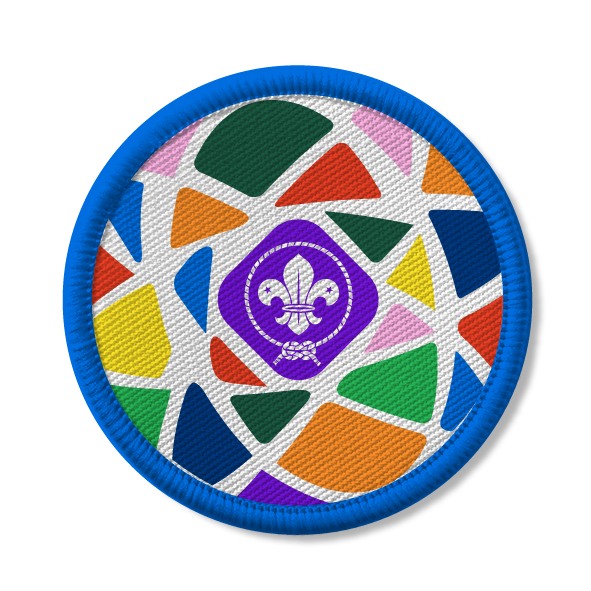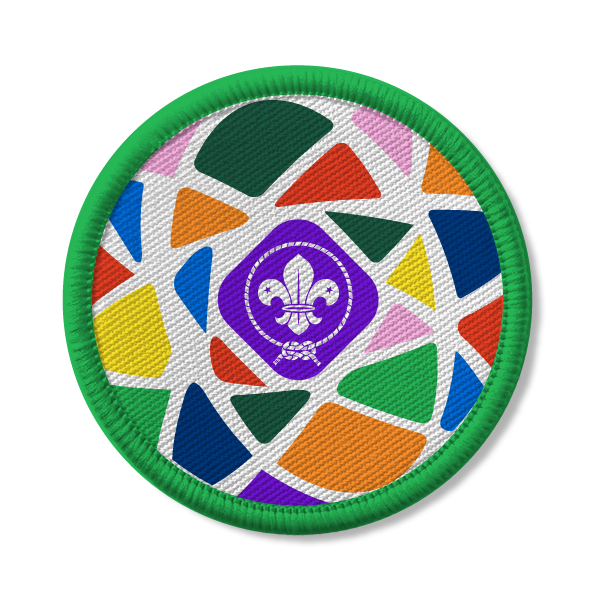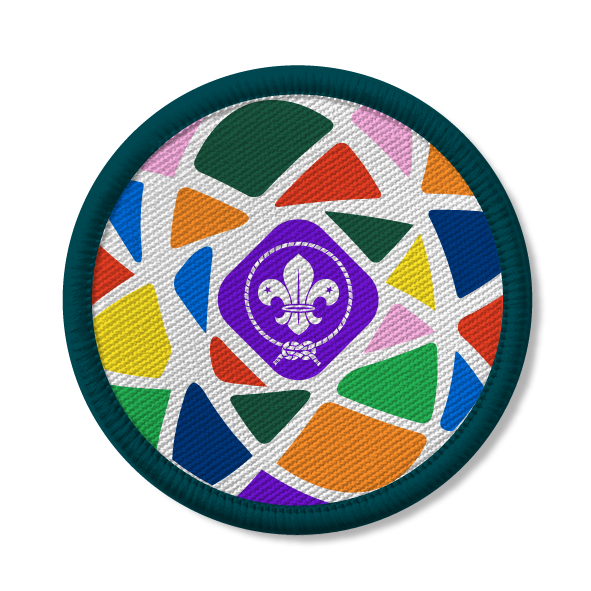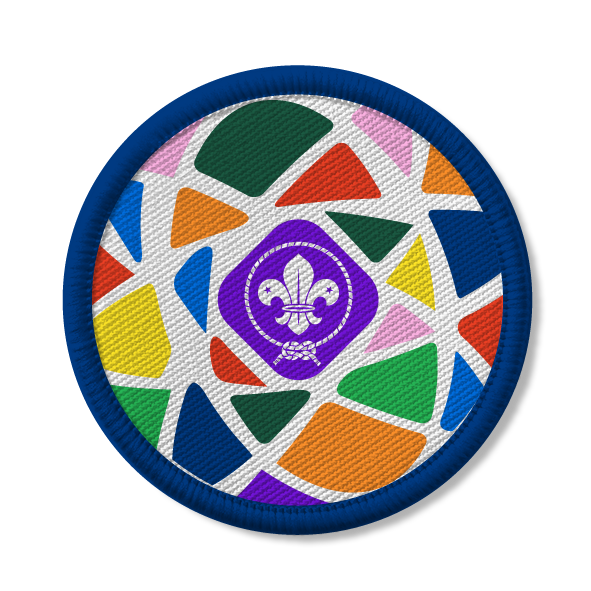
Clean up a local waterway or marine area
You’ll need
- Disposable gloves
- Gardening gloves
- Bin bags
- Litter pickers
Before you begin
- Use the safety checklist to help you plan and risk assess your activity. Additional help to carry out your risk assessment, including examples can be found here. Don’t forget to make sure all young people and adults involved in the activity know how to take part safely.
- Make sure you’ll have enough adult helpers. You may need some parents and carers to help if you’re short on helpers.
- Make sure to pre-check the area for Giant Hogweed before beginning the activity.
How to protect waterways
- Ask your young people what some of their favourite water-based activities are. People may say kayaking, swimming, pond dipping, surfing or paddle boarding.
- Ask everyone if they can think of some things people might use waterways for, apart from what’s already been mentioned. Some examples might include fishing, walking a dog, canoeing or visiting a beach.
- Discuss the importance of protecting the natural environment, and some of the threats facing marine life, such as plastic pollution.
- See if anyone can think of a reason why it’s important to keep our waterways and marine areas clean for everyone to use and enjoy. People may give ideas, such as it keeps it clean, it prevents pollution, it makes it’s pleasant for people to use, it looks after animals, or it may reduce risk of illnesses, diseases and infection.
- Remind everyone to respect the places they use. Some other ways to be kind to the water environment include:
- If you’re bringing a packed lunch, put it in a reusable box or cool bag. Avoid carrier bags that might blow away.
- Use surf boards and wetsuits made with eco-friendly, natural and recycled materials
- Take litter home and leave no trace. Bring bags with you to collect everyone’s rubbish and recycle as much as possible
- Tell everyone that as well as protecting our waterways, it’s important to stay safe near them.
- Ask people to think of ways we can stay safe before being near to or taking part in activities on waterways, in the sea, or in bodies of water. Make sure that all the following are mentioned:
- Always follow the Water Safety Code.
- Always staying away from a water’s edge. Wear sensible, grippy shoes and always walk by water. Never run. Be careful walking on rocks, sloping banks, algae or plants. Hidden and slippery bank edges can be dangerous. Plants can hide the edge and even where you can see it, it’s easy to slip into the water.
- Always use bridges to cross safely. Never walk on a frozen body of water to cross it and avoid using or making stepping stones. When using a bridge, walk across it sensibly. Never climb up onto a bridge’s walls to look over them, or sit on the edge of a bridge.
- Look for hazards, flags and signs. Follow any beach signs or flags that tell you where and when you can swim. Always read signs near canals, beaches, waterways and rivers that offer safety guidance or highlight hazards.
- Stay out of canals, reservoirs and rivers as there are hidden dangers. The water may have bacteria that causes diseases, there may be dangerous objects that you can’t see (such as broken glass or trolleys), the water will be very cold and there may be reeds that you can get tangled in.
- Never play with locks on canals. You may trap your fingers, get hurt or fall in.
- Avoid jumping. Never jump into a body of water, as it may be shallower than you expect or there may be hidden dangers, such as rocks.
- Learn about wind, water conditions, and currents and tides. If you’re going to a beach or body of water, always check the tidal activity before you go in, so you know what to expect. Rip currents, waves and tides will move you in different directions in the water. Know what to do if you get caught in a current or tide.
- Always check the weather. Check on the day and just before entering the water. Be prepared to leave or cancel your plans. Get out of the water quickly during bad weather, such as heavy rain, heavy wind, snow, thunder and lightning and so on.
- If you fall in, float. If you do get into difficulty swimming outside, stay calm and signal to shore for help. You need to float, so tip onto your back and float like a starfish until you feel calm. Floating when you're in difficulty can stop you from becoming tired and losing control of your breathing, and it gives the emergency services more time to find you.
- Never be in or around water alone. Take a friend or family member with you. You should both have someone watching you from the shore, ready to act should you need help. Always keep an eye on the shoreline.
- Tell someone. Tell someone where you are going and who you’re going with, as well as what time you expect to be back. Always take an extra set of warm clothes and a towel for any water sport activities.
- Leave the water if it doesn’t feel right. Don’t hesitate to get out of the water if something doesn’t feel right. Whether it’s that the current is getting rough, rain has started to fall, or your body is just not responding like you would like it to due to fatigue or muscle cramps, then just leave and return to the water another day. It’s always a good thing to trust your instincts.
- Look for lifeguards. For swimming, water sports and playing in water, always visit a pool, body of water, beach that has lifeguards on it or is supervised by a lifeguard. At a beach, make sure to enter the water between the red and yellow flags only, as this is where lifeguards are working.
- Do a safety check before getting into the water. Stop and ask yourself: “Is it safe?” This means that you need to check if there are lifeguards around, think about how deep the water is and have a look around for any dangers above or below the surface. If you can’t answer all these questions, then it’s best to ask a lifeguard for some advice.
- Avoid using inflatables. Playing on inflatables in the sea can go wrong very quickly, as a gust of wind can take you a very long way from the beach. To be safe, keep inflatables for the pool.
- Never enter the water to rescue items. If you lose an item in the water, such as out at sea or in a canal or river, leave it.
- Be prepared. You might want to try to always carry a whistle, a phone and a first aid kit. When you’re by water, you may want to spend time finding a safety device, such as a throw line, so you know where they are. If there isn’t a safety device where there should be one, ask a trusted adult to tell the local authority or land manager. It’s important to remember a life ring should always be placed in the water and pushed out to the person in danger - it should never be thrown. Life rings are very heavy and can injure the person in danger if not used correctly, so they’re not always provided on canals or rivers.
- Know how to help someone. If a person or an animal falls in the water, never get into the water yourself, as you may get into difficulties as well. The water may have hidden dangers in it that you can’t see, such as reeds or freezing temperatures. To help someone, you can shout for help loudly, call 999 and keep an eye on the person, tell them to float, and stay near them. If you can, get something to help them, such as a throw line. Try tying it to a tree, bollard or something else nearby and then throwing the other end in. If you can’t do this, lie down to throw it to make yourself more stable. An object, such as an empty plastic bottle or a football, may also help someone to float.
- Look after pets. Avoid throwing animal toys into water, as the dog (or other animal) may get into difficulty in the water.
- Check what you’re wearing and use safety equipment. Put on a lifejacket or buoyancy aid, wear a helmet, and avoid wearing wellington boots near water. Wellies fill up with water if you fall in and can weigh you down. Always check your equipment before using it to make sure it’s in good condition.
- If you do get into trouble in the water, tip onto your back and float like a starfish until you feel calm.
- Floating when you're in difficulty can stop you from becoming tired and losing control of your breathing, and it gives the emergency services more time to find you.
- Try not to panic or swim hard. Instead, lean back until your ears are under the water, keeping your mouth and nose out of the water.
- Push your belly up and spread your arms and legs. It doesn’t matter if your legs sink, we all float differently. Gently move your hands to stay afloat. Do this until you feel calm.
- When you feel calm, raise your hand and shout for help. If you can, swim to safety.
- Never get into the water, you may get into difficulties as well.
- Call the emergency services as soon as you can.
- Keep calm. Always think before you act.
- Phone 999 and ask for help. Use road names, bridge numbers or things that you can see to give your location.
- Try to get help by shouting “Help” as loudly as you can.
- Keep an eye on the person or animal, keep talking to them, tell them to float and stay near them.
- If you can, get something to help them, like a throw line if available. Try tying it to a tree, bollard or something else nearby and then throwing the other end in. If you can’t do this, lie down to throw it to make yourself more stable. An object, such as an empty plastic bottle or a football, may also help someone to float.
- Never put yourself into the same position to help someone in difficulties.
Take part in a waterways clean-up event
- Explain that everyone will be taking part in a community event to clear up a local river, harbour, canal, beach, lake or other waterway. However, if there are no events planned in your local area to get involved in, you could plan your own. You may need to speak to the landowner, and you may want to visit the location before the trip to plan for any boundaries.
- You may want to run a water safety session for people before running this session, so people know how to act near water and what to do to prevent drowning. Try water safety charades.
- Remember to monitor and dress for the weather, as well as to monitor wind or tides depending on your waterway. You’ll need to have somewhere for people to wash their hands after.
- Make sure everyone stays safe around the water and when picking up litter. Before you start the event, gather everyone round and give a safety briefing. You should:
-
- Explain the boundaries or no-go zones
- Ask if anyone can see any safety features, such as a life ring.
- Remind everyone to always stay away from the edge.
- Tell everyone where adults will be around the site - you may have a memorable ‘base’ spot where at least one adult will always be present.
- Explain what to do if anyone needs help and what to do if someone gets into danger in the water.
- Remind everyone that if they fall in, they need to remember to stay calm and float.
- Always making sure young people are paired up or in groups, within sight of an adult.
- Having a clear way to communicate to people must stop when needed, such as a long blow on a whistle.
- Demonstrate how to use the litter pickers.
- Tell everyone to avoid touching your face or eating and drinking while litter picking or wearing the gloves.
- Remind everyone to never enter the water, even if an object or person falls in, and they should shout for help instead.
- Everyone should wash their hands regularly, including after the litter pick, or use anti-bacterial gel.
- Remind everyone how they can use the space respectfully, without disturbing the wildlife or other people enjoying the site if you're in a public space.
- Some waterways, such as canals and rivers, are untreated water. They may contain pollution, biological or chemical contaminants. Please bear this in mind when you come into contact with the water and follow basic hygiene measures, such as regular hand washing and no eating or drinking during the activity.
Start litter picking
- Give out gloves and remind everyone that the gloves must be worn at all times.
- Now give out the litter picking equipment, such as bin bags, litter pick hoops and litter pickers.
- Dispose of the collected litter in a safe way, such as at a council tip or designated bin.
- Make sure everyone washes their hands thoroughly after removing the gloves.
- You may want to wash gloves and clean any equipment after the litter pick.
- Try to take before and after pictures to show the difference you’ve made – you may want to share them with your local community, but make sure you’ve got any photo consents in place.
- You could take it further and make posters to remind people to leave no trace or campaign for more bins by waterways in your local area.
Earn your Time on the Water badge
Why not plan any activity to earn or contribute to your Time on the Water badge in the area you’ve cleaned?
Reflection
After you have done a clean-up along your nearest waterways, spend some time talking about how much litter you collected.
What were some of the items you found? Were there any other signs of pollution or risks that you spotted, where the water-way or marine area could be better cared for?
How did it make you feel to see litter or pollution in nature? What are some actions you make take the next time you are on the water to be kinder to the environment?
Safety
All activities must be safely managed. You must complete a thorough risk assessment and take appropriate steps to reduce risk. Use the safety checklist to help you plan and risk assess your activity. Always get approval for the activity, and have suitable supervision and an InTouch process.
- Visits away from your meeting place
Complete a thorough risk assessment and include hazards, such as roads, woodland, plants, animals, and bodies of water (for example, rivers, ponds, lakes, and seas). You’ll probably need more adult helpers than usual. Your risk assessment should include how many adults you need. The young people to adult ratios are a minimum requirement. When you do your risk assessment, you might decide that you need more adults than the ratio specifies. Think about extra equipment that you may need to take with you, such as high visibility clothing, a first aid kit, water, and waterproofs. Throughout the activity, watch out for changes in the weather and do regular headcounts.
- Near water
Manage groups carefully when near water. The guidance on activities near water will help you to keep your group safe.
Make it accessible
All Scout activities should be inclusive and accessible.
This activity doesn’t directly support young people to achieve the Time On the Water Staged Activity badge, but they’ll develop a stronger appreciation for our waterways and the importance of protecting them. This’ll enable them to enjoy time on the water and help them to maintain our public spaces for everyone.



